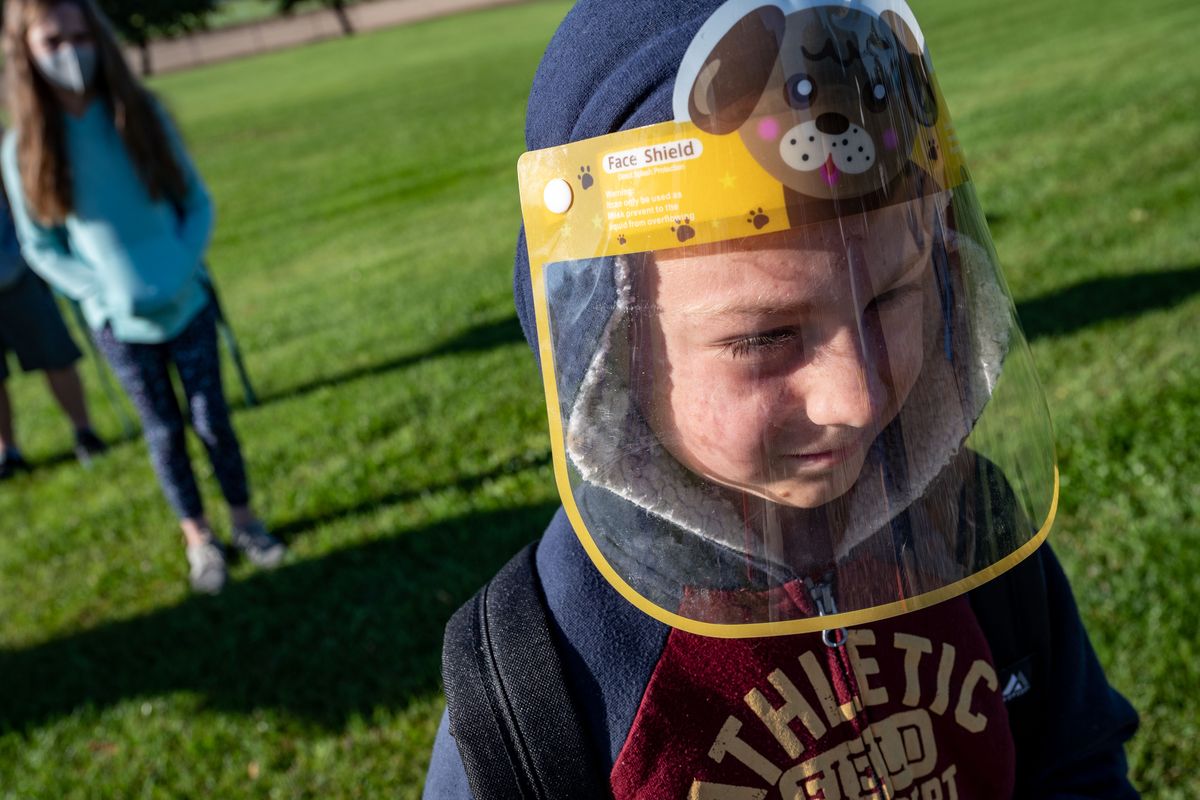Back to school: How safe will it be?

Invention has a new mother: COVID-19.
At Woodland Middle School in Coeur d’Alene, the brainstorming sessions began soon after the school board approved a plan that would bring students back twice a week as safely as possible.
The first question, recalled Principal Michael Lindquist: “What were we going to do with all those extra chairs?”
The solution was clever as well as practical. As rooms were deep-cleaned and the furniture appropriately spaced, the extra chairs were moved into the cafeteria.
Now they sit in neat rows 6 feet apart in every direction – tough luck for the kid who wants to barter his sandwich, but that’s part of life in a pandemic.
The staff’s inventiveness spread into the hallway, where lockers are off-limits and wide strips of tape will keep traffic moving.
“An intro to driver’s ed,” Lindquist quipped.
The tape also serves as a metaphor for the fine line many school districts have been forced to walk this summer: Safety first, but at what cost?
Heeding state and local recommendations, most Washington districts opted to begin the year with distance-learning only.
The biggest exceptions are in Spokane County, where Mead (enrollment 10,771), East Valley (4,256) and Deer Park (2,661) together represent more than half the hybrid learners in the state.
There will be risks, almost everyone acknowledges.
Dr. Bob Lutz, health officer with the Spokane Regional Health District, “strongly recommended” all districts begin the year with distance learning.
But in the end, those districts foresaw a greater downside in keeping children away from school and parents away from their livelihoods.
“We’re thrilled to give families this opportunity,” said Deer Park Superintendent Travis Hanson, whose district began the year Tuesday with a hybrid model.
“We’re so proud … because for some of our families, remote learning is no learning,” Hanson said.
For those who disagree, all hybrid districts have established remote-learning programs that will last the entire school year.
It all comes down to choice, Mead school board President Carmen Green said in a recent letter to teachers.
“As a leader I believe in attempting to navigate and consider the needs of the community fully, not telling people how they must live their lives,” Green wrote.
“The decision about return to school, contrary to what some believe was the ‘easy’ decision was anything but that,” Green added. “In fact, the ‘easier’ decision, if there is such a thing, would have been to follow guidance for distant learning.”
The decisions at Mead and other school districts tended to put parents and teachers in opposite corners, the latter having no choice but to resign or seek reassignment.
Surveys conducted by local teachers’ unions have shown a majority in most districts are opposed to the hybrid model.
At Mead, the school year begins on Monday with daily instruction for K-5 and twice a week for secondary-level students.
The district, however, isn’t quite ready. Most of last week was spent in negotiations with the Mead Education Association over working and learning conditions.
“Our goal is to create a safe learning environment for our kids,” MEA President Toby Doolittle said last week between bargaining sessions over a new memo of understanding.
Doolittle conceded the district and building administrators are “putting in a lot of work to make this successful,” but said teachers are also worried about delivering content to both in-person and remote learners.
Safety concerns notwithstanding, most teachers would prefer face-to-face learning.
“That’s what we want, and that’s what every family wants: a safe and effective environment for learning,” Doolittle said.
They’re not mutually exclusive, but there are trade-offs. The county’s two largest districts, Spokane and Central Valley, begin the year with distance learning – safe but unsatisfying.
Hybrid learning is the high-risk, high-reward alternative, but neither variable can be measured.
“Long-term effects of this disease are unknown and will take the long term to determine,” Green said. “How long will we be willing to wait before we are not afraid?”
Across the nation, districts have attempted to chart a path that balances safety and practicality.
At Mead, the protocols are laid out on the district’s website. Depending on whom you ask, they are either overly burdensome or utterly inadequate.
Every evening before the school day, parents must “attest” to their child’s health by completing the Daily Symptom Check survey. Staff will also need to attest to their own health.
The survey must be filled out by midnight, and parents must double-check for health changes each morning.
Students without a health survey submitted will undergo health screening upon arrival.
If a student or staff member is diagnosed with COVID-19, their family should notify the school immediately.
Upon arrival, students will enter buildings at assigned “Safe Entrance Zones.”
While waiting, they must remain 6 feet apart.
At the door, screeners will check for the student’s name on the attestation and double-check for visual symptoms.
Students with an attestation and no visible symptoms will get breakfast and then transition immediately to their classrooms. Those without an attestation will go to a second screener for a temperature check and additional screening.
Any student who shows symptoms of illness will be directed to a symptom room.
Masks are required at all times except while the student is eating. The only exceptions are for those with medical exemptions documented from their health care provider.
Will it be enough? Lutz is dubious.
Asked about the model at Mead, he said, “I wish them the best. We know that there will be cases there.”
